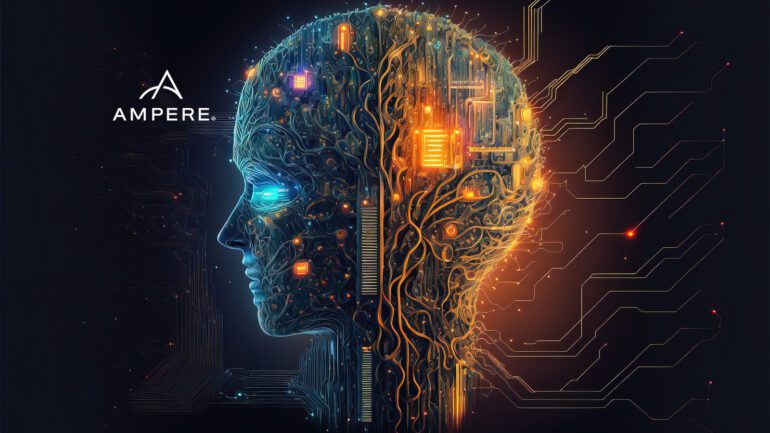TL;DR:
- Ampere, in collaboration with several chip startups, forms the AI Platform Alliance to challenge Nvidia’s dominance in the AI hardware market.
- The alliance aims to create an open AI ecosystem addressing issues with closed hardware and software, power inefficiency, and high costs.
- They plan to develop comprehensive platform solutions that are more efficient than GPUs, specifically targeting Nvidia’s position.
- The alliance acknowledges Nvidia’s power-hungry GPUs as a focal point of contention.
- Strategies include standardizing form factors for hardware and aligning around common software tools and frameworks.
- The initial focus is on rectifying hardware issues and providing customers with more choices.
- Intel and AMD, prominent AI hardware players, are notably absent from the alliance.
- Experts agree on Nvidia’s leading market position and anticipate its continued growth.
Main AI News:
In the world of technology, history often reveals the triumph of David over Goliath, as smaller players unite to challenge industry giants. This week, Arm CPU vendor Ampere unveiled the AI Platform Alliance, a strategic move aimed at dethroning Nvidia from its dominant position in the AI hardware market.
The alliance comprises several prominent chip startups, including Cerebras Systems, Graphcore, Furiosa, Kalray, Kinara, Luminous, Neuchips, Rebellions, and Sapeon. Their shared objective? To foster an open AI ecosystem that addresses the shortcomings of existing solutions.
Jeff Wittich, Chief Product Officer at Ampere, emphasized the inherent limitations of incumbent solutions: closed ecosystems on both the hardware and software fronts, inefficient power consumption, and high costs. These issues have hindered the scalability of AI, making it an expensive and unsustainable endeavor for many.
Wittich asserted that no single chipmaker can tackle this challenge in isolation. The collaboration aims to provide comprehensive platform solutions that can be seamlessly integrated, a stark contrast to the existing GPU-centric approach.
Notably, the alliance explicitly references “GPUs” in its release, a pointed dig at Nvidia. The chip giant’s H100 GPUs are known to consume a staggering 700 watts and, when incorporated into HGX mainboards, can draw upwards of 10kW at the system level.
Addressing power efficiency in AI can be approached from various angles, including hardware, software, and standards. Chipmakers within the alliance are exploring the possibility of establishing common form factors to facilitate the development of chassis that support multiple accelerator vendors. On the software front, they aim to converge around a common set of code tools and frameworks to ensure the seamless operation of AI models across diverse hardware architectures.
The foremost priority for the alliance is rectifying the hardware issue. Wittich emphasized their commitment to creating a wide array of hardware solutions that can be readily deployed on existing OEM and ODM platforms, providing customers with much-needed choices.
While Cerebras CEO Andrew Feldman highlights the importance of open foundation models, Graphcore has chosen to remain silent on the alliance’s significance.
Ampere anticipates that the AI Platform Alliance will attract additional members in the coming weeks, welcoming any AI company specializing in hardware to join the initiative. Nevertheless, it remains uncertain whether the increased availability of AI systems from alliance members will be sufficient to challenge Nvidia’s market dominance.
Although experts differ on the extent of Nvidia’s hold on the AI market, there is consensus that the company is the undisputed leader. Recent developments in Nvidia’s product roadmap are poised to extend this lead, provided they can overcome networking challenges.
Interestingly, two major players absent from the alliance are Intel and AMD. Both companies have made significant investments in AI hardware and software development, promoting open-source frameworks and tools compatible with third-party platforms. Intel’s open-source initiatives, including OneAPI, OpenVINO, and SYCL runtimes, aim to rival Nvidia’s CUDA, offering a more inclusive alternative. AMD, on the other hand, collaborates with Hugging Face to expand the catalog of open-source models compatible with its Instinct and Alveo accelerators.
In terms of hardware, both Intel and AMD possess substantial experience and resources, working closely with ODMs to standardize form factors for a wide range of systems.
When asked about the possibility of adding Intel or AMD to the alliance, Wittich confirmed that anyone is welcome to apply, and the initial partners were selected from vendors Ampere had previously collaborated with.
Conclusion:
Ampere’s AI Platform Alliance represents a significant challenge to Nvidia’s established dominance in the AI hardware market. By addressing critical issues, such as power efficiency and ecosystem openness, the alliance seeks to offer more efficient alternatives to Nvidia’s GPUs. While the absence of Intel and AMD raises questions, it remains to be seen whether this collaborative effort can truly chip away at Nvidia’s market share.

